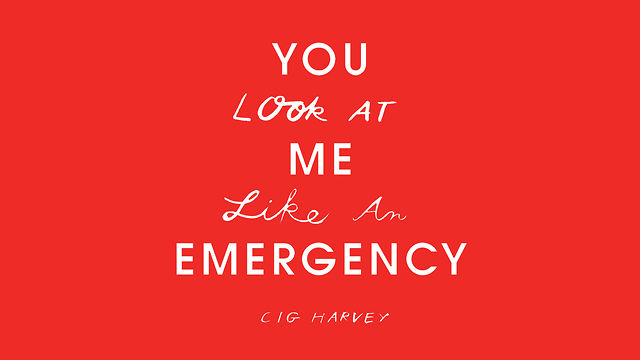Christopher Anderson arrived in Sete during a Saint Louis celebration evening. He immediately mingled amongst the jousters, became one of them, became a “Knight of the Tintaine”
Category: Portfolios & Galleries
-

Baby Riley
the life of m
via Tumblr: https://thelifeofm.com/?og=1
Trisomy 18, the doctor said, is “incompatible with life.” The baby would likely die before birth. If she did live, odds were a coin toss that she would die in the first weeks and less than 1 in 10 she would live a year. She would not cry or smile, the doctor told them. She would never walk or talk.
-
Arrivals and Departures with Jacob Aue Sobol: Episode 3 – The Train
Even though I am a photographer, I try to avoid being a voyeur. It has always been my ambition not only to look, but also take part in life, which can be quite frustrating, especially if you have a tight deadline. If I meet someone playing soccer in the street, I immediately feel like playing with them instead of just watching. I never found it interesting to look at someone from the other side of the street, or to be “invisible” as a photographer. I hope this is the reason why people never feel like a voyeur looking at my images– because you feel that you are taking part.
-
Tokyo-Ga : Invisible existences
The second chapter of the project Tokyo-Ga is entitled Invisible Existences. Whereas the first chapter preferred distance, this chapter prefers closeness and black-and-white. In solidarity with the recent events that have shaken Japan, the curator Naoko Ohta has conceived a large-scale photography project.
-
Manchuria Crossroads (10 Photos)
Q Sakamaki photographed throughout China’s Northeast which was once called Manchuria. The region was a crossroads, transformed by history through migration, resource exploitation, occupation and war. And now the area is facing new upheaval due to globalization and China’s rapid economic growth, creating a gap between the rich and poor, as well as contributing to a rise in unemployment.
-

Jason Eskenazi’s Half-Exposures at Look3
Half Photos, Striving to be More
Jason Eskenazi’s orphaned, fascinating accidents provoke him to wonder if he should even bother looking through his camera’s viewfinder, and they will be shown at the Look3 photo festival in Charlottesville, Va.
via Lens Blog: http://lens.blogs.nytimes.com/2012/06/09/half-photos-striving-to-be-more/?pagewanted=all
After developing their film, most photographers snip off and throw away the double-zero frame, at the beginning of the roll, that is usually half-exposed.
Jason Eskenazi is not like most photographers (anyone who knows him will tell you that), and he’s been saving those frames for many years.
-
Shahidul Alam by John G. Morris
-

Interview with Cig Harvey: YOU Look At ME Like An EMERGENCY
Interview with Cig Harvey: YOU Look At ME Like An EMERGENCY – LENSCRATCH
Sometimes you come across work you fall in love with, work that resonates with you in such a deep way, and you begin seeing the world through the lens and point of view of a great image maker. I have been a fan of Cig Harvey’s photographs from the moment I encountered her way of
via LENSCRATCH: http://lenscratch.com/2012/06/interview-with-cig-harvey-you-look-at/
Cig is a visual painter, creating images that shimmer with color and gesture, that have the punctuation and staccto of red berries, purple finger nails, or a diving bell. She speaks to memory, to moments, to quiet and beauty, and never loses her connection to the natural world. Her work is a sensory experience, where you feel what she feels when she captured the dapple of summer sunlight on skin or the splash of water that is a color only our memories seem to hold
-

The New York Times’s War Photojournalists Showcased at Photoville
Bringing Photographs of War to the Brooklyn Waterfront
The New York Times spotlights a decade of war photojournalism at Photoville, an immersive photo exhibition opening today in Brooklyn Bridge Park.
via Lens Blog: http://lens.blogs.nytimes.com/2012/06/22/exhibiting-a-decade-of-war/
Photographers for The New York Times have covered the wars in Iraq and Afghanistan since the beginning and continue to do so, long after most news organizations have withdrawn. They have brought the crux of the wars to the doorsteps of the American public — often at great personal risk.
-

The Stone Throwers of Palestine
LightBox | Time
Read the latest stories about LightBox on Time
via Time: https://time.com/section/lightbox/
Last week, seven Palestinian men sat for Pulitzer Prize-winning Israeli photographer Oded Balilty in a home in the West Bank village of Bilin. Against a black backdrop, one man posed with a taut slingshot, two small pebbles resting in the sling. Another stared defiantly through a gas mask. A third carried a tire.
-
Tadeu Vilani – B & W TV
This project is called B & W TV (Black and White TV), is referring to people living in the suburbs of the metropolitan area of Porto Alegre, capital of Rio Grande do Sul, Brazil. The project consists of scrap through television to give an identity to these people in need of attention in the social environment.
-
South Africa: Jillian Edelstein, Truth & Lies
The photographer took a series of portraits just after the end of apartheid, when South Africans were being asked to forgive. The result of four years of work, Truth & Lies bears witness to this reconciliation and questions the idea of South African identity. It documents the Commission of Truth and Reconciliation, which aimed to take account of the human rights violations committed during apartheid, in the hope of reconciling the South African people. In exchange for public confessions, the perpetrators of the crimes were pardoned.
